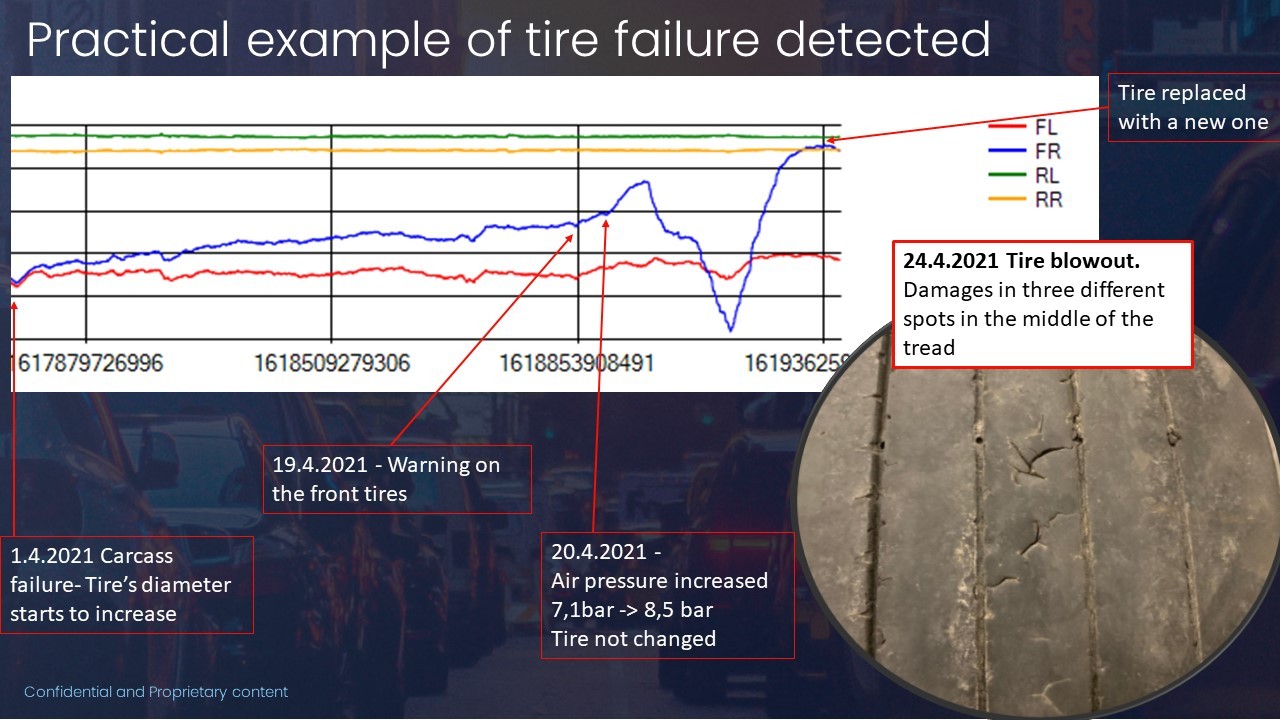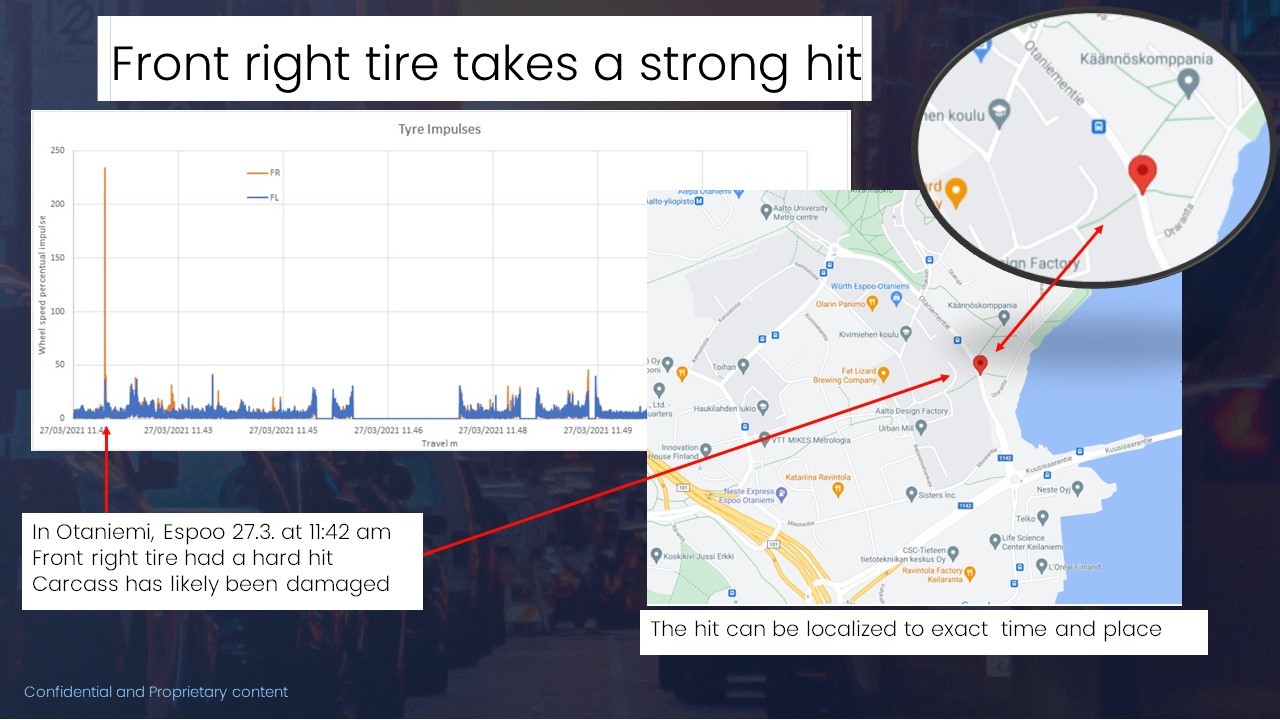Wanna know when your tire’s gonna blow?
Cars provide tons of data every second. Most of it is useless Gibberish because we can not understand, not to mention utilize it. Tire monitoring is a low hanging fruit of turning vehicle data into a useful service.
At the simplified level air pressure can be monitored accurately by monitoring the radius / diameter of the tire. Decreasing diameter in the short term means decreasing air pressure. This is logical, but not actually the whole truth. There needs to be ways of excluding factors as temperature, load etc in place to come up with reliable air pressure information.
In a longer term decreasing diameter enables monitoring of the tread depth. When the air pressure and other external factors are eliminated, the only logical reason for the decrease in diameter is wearing of the tire’s tread. This might not be much of an issue for us driving our personal cars, but imagine yourself being responsible for a fleet of dozens or hundreds of trucks or buses. This is not only a safety issue. It is also very much a money issue.
The headline of this article is Wanna know when your tire’s gonna blow. What do air pressure and tread wear have to do with tires blowing? Not much, but the diameter does! If the diameter starts to increase, the problem is not increasing tire pressure nor thickening tread. The problem is that the carcass (structure) of the tire is starting to break and that is a serious problem. If a tire from a bus or a truck explodes next to you, you better hope that it does not blow in your direction.
This is how one city bus tire failure showed in data already weeks before the bang. The diameter of the front right started to increase three weeks earlier. It reached the warning level five days before the failure.

This got really interesting when we started to look for possible reasons for the damage. Four days before the timeline above the front right had taken a massive hit.

We can not know for sure if this hit was the reason for the tire failure, but it is our best guess. Knowing the exact location of the hit we checked the place out and there was nothing out of the ordinary there. So it probably has been a stone or some other object on the road.
Regardless of the reason for the tire failure, it is quite nice to be able to foresee it from the data. My guess is that we all would like to know beforehand if our tire was about to blow.
Going one step deeper into understanding the tire behaviour enables brake balance monitoring, drive traction, braking grip, rolling resistance, chassis condition (joints, axels..) road condition (potholes, bumps, roughness) you name it. All we need to do is to listen and understand what the cars are telling us.